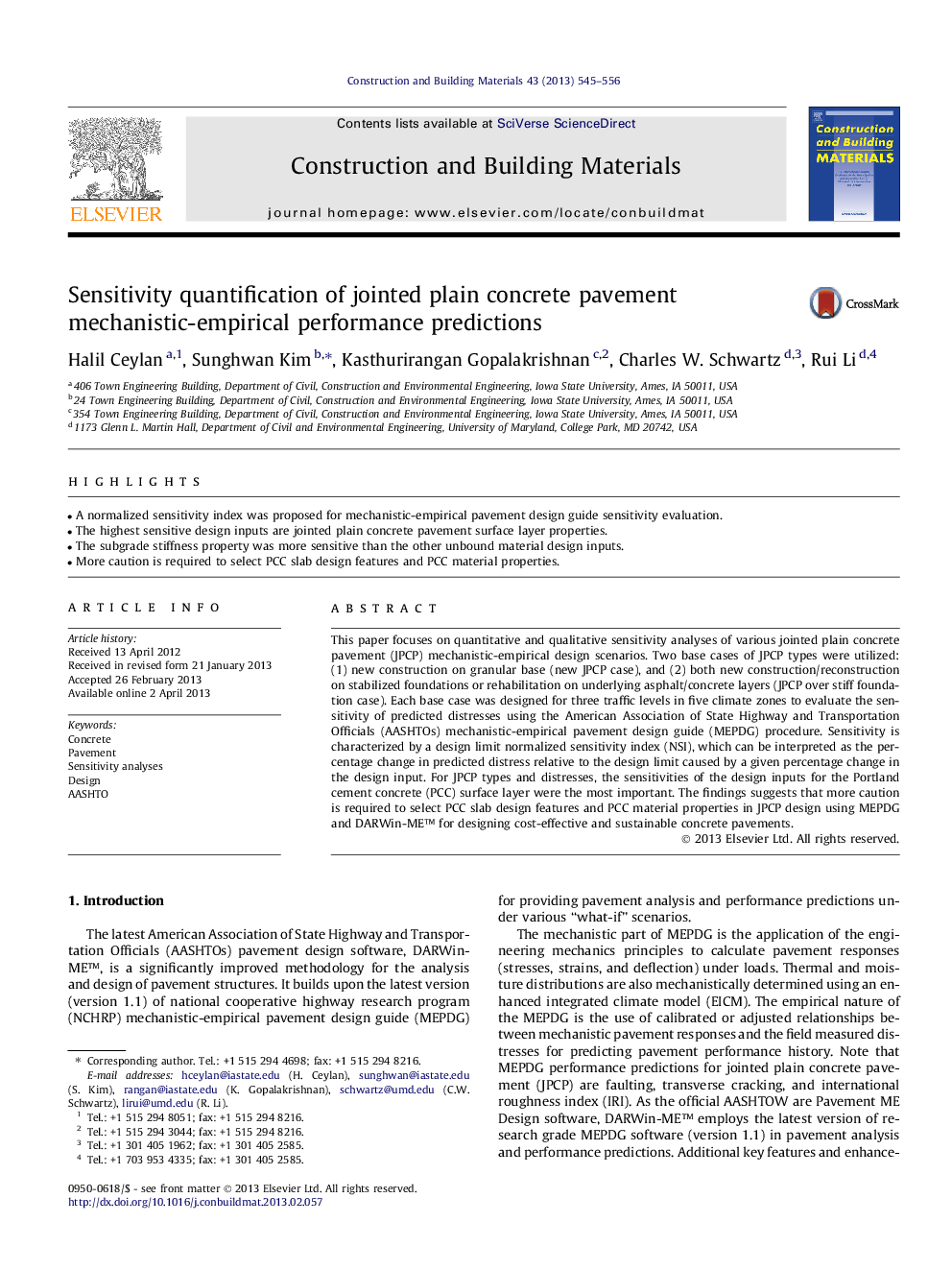| Article ID | Journal | Published Year | Pages | File Type |
|---|---|---|---|---|
| 258187 | Construction and Building Materials | 2013 | 12 Pages |
•A normalized sensitivity index was proposed for mechanistic-empirical pavement design guide sensitivity evaluation.•The highest sensitive design inputs are jointed plain concrete pavement surface layer properties.•The subgrade stiffness property was more sensitive than the other unbound material design inputs.•More caution is required to select PCC slab design features and PCC material properties.
This paper focuses on quantitative and qualitative sensitivity analyses of various jointed plain concrete pavement (JPCP) mechanistic-empirical design scenarios. Two base cases of JPCP types were utilized: (1) new construction on granular base (new JPCP case), and (2) both new construction/reconstruction on stabilized foundations or rehabilitation on underlying asphalt/concrete layers (JPCP over stiff foundation case). Each base case was designed for three traffic levels in five climate zones to evaluate the sensitivity of predicted distresses using the American Association of State Highway and Transportation Officials (AASHTOs) mechanistic-empirical pavement design guide (MEPDG) procedure. Sensitivity is characterized by a design limit normalized sensitivity index (NSI), which can be interpreted as the percentage change in predicted distress relative to the design limit caused by a given percentage change in the design input. For JPCP types and distresses, the sensitivities of the design inputs for the Portland cement concrete (PCC) surface layer were the most important. The findings suggests that more caution is required to select PCC slab design features and PCC material properties in JPCP design using MEPDG and DARWin-ME™ for designing cost-effective and sustainable concrete pavements.
